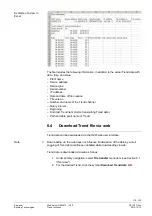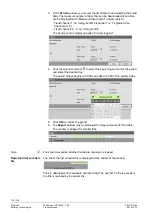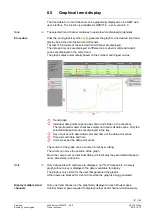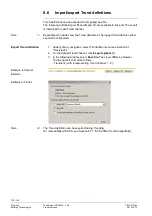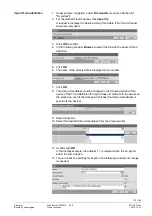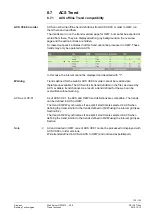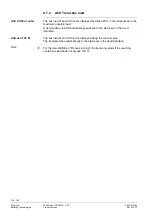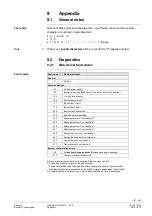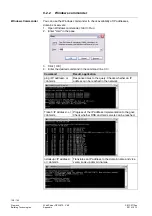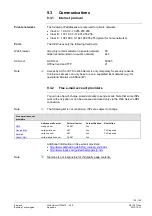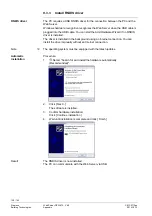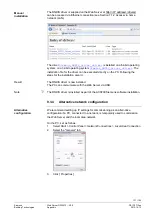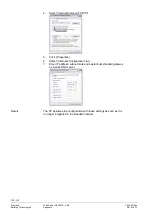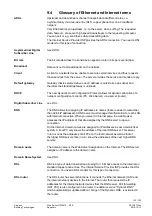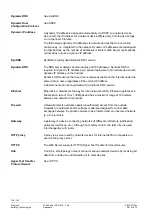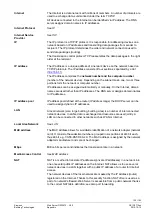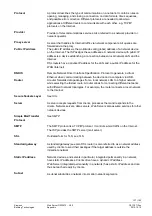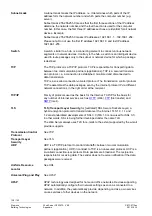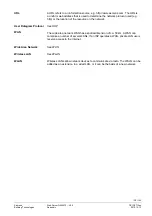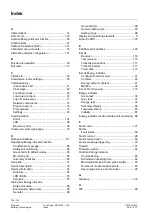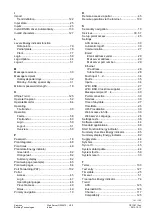
133 / 143
Siemens
Web Server OZW672... V6.0
CE1C5712en
Building Technologies
Appendix
2015-10-13
9.4 Glossary of Ethernet and Internet terms
ADSL
Upstream and downstream channel transport data at different rates, i.e.
asymmetrically via a two-wire line (DLS, copper phone line) on a broadband
network.
Very little data is sent upstream, i.e. to the server, when surfing. The requested
data, however, are sent at high speed downstream to the requesting computer.
You can call or e.g. send faxes while transmitting data.
The Internet Service Provider ISP provides the ADSL connection. You need a DSL
modem for this type of connection.
Asymmetrical Digital
Subscriber Line
See ADSL
Bit rate
The bit rate describes the transmission speed or rate in bits per second (bps).
Broadcast
Data sent out to all participants on the network.
Client
A client is a network device unable to execute certain services and thus requests
those services from the server. The server provides the service and sends a reply.
Default gateway
Gateway that is selected when one IP address is outside its own subnet and
therefore the standard gateway is unknown.
DHCP
The new Dynamic Host Configuration Protocol allows for dynamic allocation of a
network configuration to clients (PC, Web Server) via a server (router).
Digital Subscriber Line
see DSL
DNS
The DNS allows for assigning IP addresses to names (that are easier to remember
than 32-bit IP addresses). A DNS server must manage this information for each LAN
with Internet connection. When you select an Internet page, the web browser
accesses the IP address of that site assigned by the DNS server to open a
connection.
On the Internet, domain names are assigned to IP addresses as per a hierarchical
system. A local PC only knows the address of the local DNS server. This server,
in turn, knows the addresses of all PCs on the local network as well as that of
the higher DNS servers that, in turn, know the addresses of the next higher DNS
servers.
Domain name
The domain name is the Web Server designation on the Internet. The DNS server
assigns an IP address to the domain name.
Domain Name System
See DNS
DSL
DSL is a type of data transmission allowing for 1.5 Mbps access to the Internet on
standard copper phone lines. The Internet Service Provider ISP provides the DSL
connection. You need a DSL modem for this type of connection.
DSL router
The DSL router has several functions. It connects the Ethernet network (LAN) and
the internal network devices to the Internet. The router then requests the IP
addresses for the internal network devices from the DNS server. Port forwarding
(NAT, PAT) is also configured in the router. In addition, service "Dynamic DNS"
which automatically is updated after a change of the Dynamic DNS, is activated in
the router.

